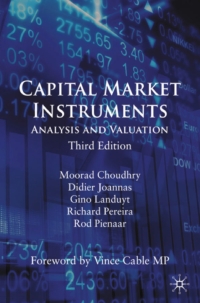Question
Pear Corporation acquired 75 percent ownership of Sugar Company on January 1, 20X1, at underlying book value. At that date, the fair value of the
Pear Corporation acquired 75 percent ownership of Sugar Company on January 1, 20X1, at underlying book value. At that date, the fair value of the noncontrolling interest was equal to 25 percent of the book value of Sugar Company. Consolidated balance sheets at January 1, 20X3, and December 31, 20X3, are as follows:
| Item | Jan. 1, 20X3 | Dec. 31, 20X3 | ||||||||
| Assets | ||||||||||
| Cash | $ | 83,500 | $ | 115,500 | ||||||
| Accounts Receivable | 87,000 | 102,000 | ||||||||
| Inventory | 118,000 | 126,000 | ||||||||
| Land | 47,000 | 57,000 | ||||||||
| Buildings & Equipment | 525,000 | 560,000 | ||||||||
| Less: Accumulated Depreciation | (170,500 | ) | (207,000 | ) | ||||||
| Patents | 6,000 | 5,000 | ||||||||
| Total Assets | $ | 696,000 | $ | 758,500 | ||||||
| Liabilities and Owners Equity | ||||||||||
| Accounts Payable | $ | 61,000 | $ | 66,000 | ||||||
| Wages Payable | 19,000 | 13,000 | ||||||||
| Notes Payable | 245,000 | 260,000 | ||||||||
| Common Stock ($10 par value) | 139,000 | 139,000 | ||||||||
| Retained Earnings | 207,000 | 251,500 | ||||||||
| Noncontrolling Interest | 25,000 | 29,000 | ||||||||
| Total Liabilities and Owners Equity | $ | 696,000 | $ | 758,500 | ||||||
The consolidated income statement for 20X3 contained the following amounts:
| Sales | $ | 473,750 | ||||||
| Cost of Goods Sold | $ | 259,000 | ||||||
| Wage Expense | 46,000 | |||||||
| Depreciation Expense | 36,500 | |||||||
| Interest Expense | 11,000 | |||||||
| Amortization Expense | 1,000 | |||||||
| Other Expenses | 33,000 | (386,500 | ) | |||||
| Consolidated Net Income | $ | 87,250 | ||||||
| Income to Noncontrolling Interest | (9,750 | ) | ||||||
| Income to Controlling Interest | $ | 77,500 | ||||||
Pear and Sugar paid dividends of $33,000 and $23,000, respectively, in 20X3. Required: a. Prepare a worksheet to develop a consolidated statement of cash flows for 20X3 using the indirect method of computing cash flows from operations. (Values in the first two columns (the "parent" and "subsidiary" balances) that are to be deducted should be indicated with a minus sign, while all values in the "Consolidation Entries" columns should be entered as positive values. For accounts where multiple adjusting entries are required, combine all debit entries into one amount and enter this amount in the debit column of the worksheet. Similarly, combine all credit entries into one amount and enter this amount in the credit column of the worksheet.)

b. Prepare a consolidated statement of cash flows for 20X3. (Amounts to be deducted should be indicated with a minus sign.)

Step by Step Solution
There are 3 Steps involved in it
Step: 1

Get Instant Access to Expert-Tailored Solutions
See step-by-step solutions with expert insights and AI powered tools for academic success
Step: 2

Step: 3

Ace Your Homework with AI
Get the answers you need in no time with our AI-driven, step-by-step assistance
Get Started


